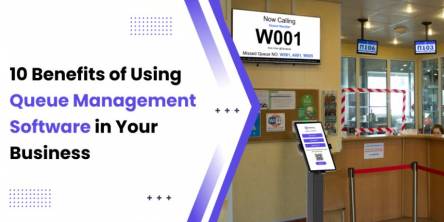How to Seamlessly Implement IT Management Software at Your Organization

Managing an organization's IT infrastructure has become increasingly complex. With the proliferation of devices, applications, and data, IT teams face significant challenges in ensuring seamless operations, security, and compliance. This is where IT management software comes into play, offering a centralized platform to streamline processes, enhance visibility, and optimize resource utilization.
Implementing an IT management solution, however, is not a straightforward task. It requires careful planning, strategic execution, and ongoing monitoring to ensure successful adoption and maximized benefits. This article delves into the best practices for IT management software implementation, guiding you through the entire process from initial considerations to post-implementation evaluation.
Benefits of Implementing IT Management Software
Implementing an IT management software solution can yield numerous benefits for your organization, including:
- Improved Efficiency: By automating and streamlining IT processes, you can reduce manual effort, minimize errors, and increase productivity.
- Enhanced Visibility: Gain real-time insights into your IT infrastructure, enabling proactive monitoring, troubleshooting, and decision-making.
- Centralized Management: Consolidate and manage various IT components from a single, unified platform, simplifying operations and reducing complexity.
- Compliance and Security: Ensure adherence to industry regulations and security best practices, mitigating risks and potential breaches.
- Cost Optimization: Optimize resource allocation, minimize downtime, and reduce operational expenses through efficient IT management.
Key Considerations Before Implementing IT Management Software
Before embarking on the implementation journey, it's crucial to assess your organization's specific needs, goals, and existing IT infrastructure. Consider the following factors:
- Current IT Landscape: Evaluate your current IT environment, including hardware, software, network infrastructure, and existing management tools.
- Business Requirements: Identify the specific IT management needs of your organization, such as asset management, software deployment, patch management, or remote support.
- Scalability and Flexibility: Ensure that the chosen IT management solution can adapt to your organization's growth and evolving requirements.
- Integration Capabilities: Assess the ability of the software to integrate with your existing systems and tools, minimizing disruptions and maximizing efficiency.
- Budget and Resource Allocation: Determine the financial and human resources required for successful implementation and ongoing maintenance.
Best Practices for IT Contingency Planning
A robust IT Contingency Plan is a critical component of effective IT management. It outlines the strategies and procedures to be followed in the event of disruptions, disasters, or unexpected incidents that could impact your IT infrastructure. Here are some best practices for IT contingency planning:
- Risk Assessment: Conduct a comprehensive risk assessment to identify potential threats, vulnerabilities, and their impact on your IT operations.
- Backup and Recovery Strategies: Implement reliable backup and disaster recovery solutions to ensure data integrity and business continuity in case of data loss or system failures.
- ncident Response Plan: Develop a detailed incident response plan that outlines the steps to be taken, roles and responsibilities, and communication protocols during an IT emergency.
- Testing and Validation: Regularly test and validate your contingency plan to ensure its effectiveness and identify areas for improvement.
- Training and Awareness: Provide ongoing training and awareness programs for your IT staff and stakeholders to ensure they are prepared to execute the contingency plan when needed.
Choosing the Right Mobile Device Management Solution for IT Management
In today's mobile-centric world, effective Mobile Device Management (MDM) is crucial for IT management. An MDM solution enables you to securely manage and monitor mobile devices, applications, and data within your organization. When selecting an MDM solution, consider the following factors:
- Device Support: Ensure that the MDM solution supports a wide range of mobile devices, operating systems, and platforms used within your organization.
- Security Features: Evaluate the security capabilities of the MDM solution, including encryption, remote wipe, and access control mechanisms.
- Application Management: Look for features that allow you to distribute, update, and manage applications on mobile devices centrally.
- Reporting and Analytics: Prioritize MDM solutions that offer comprehensive reporting and analytics capabilities for monitoring device usage, compliance, and potential threats.
- Integration with Existing IT Management Tools: Consider solutions that seamlessly integrate with your existing IT management software for a unified management experience.
Steps For Successful IT Management Software Implementation
Implementing an IT management software solution is a multi-phase process that requires careful planning and execution. Follow these steps to ensure a successful implementation:
- Define Project Scope and Objectives: Clearly define the scope of the implementation project, including the specific IT management areas to be addressed and the desired outcomes.
- Assemble the Implementation Team: Build a cross-functional team comprising IT professionals, stakeholders, and subject matter experts to drive the implementation process.
- Develop an Implementation Plan: Create a detailed implementation plan that outlines the project timeline, milestones, resource allocation, and risk mitigation strategies.
- Configure and Customize: Tailor the IT management software to align with your organization's specific requirements, processes, and workflows.
- Conduct Pilot Testing: Before full-scale deployment, perform pilot testing to identify and address any potential issues or compatibility concerns.
- Deploy and Rollout: Execute a phased rollout of the IT management software, ensuring proper training, communication, and support for end-users.
- Monitor and Optimize: Continuously monitor the performance of the IT management software, gather feedback, and make necessary optimizations to enhance its effectiveness.
Training and Onboarding Strategies for IT Management Software
Effective training and onboarding are crucial for maximizing the adoption and utilization of the IT management software. Consider the following strategies:
- Develop Comprehensive Training Materials: Create detailed training materials, including user guides, video tutorials, and interactive simulations, to cater to different learning styles.
- Conduct In-Person or Virtual Training Sessions: Organize hands-on training sessions, either in-person or virtually, to provide guidance and address any questions or concerns.
- Establish a Support System: Implement a robust support system, such as a dedicated help desk or knowledge base, to assist users with troubleshooting and ongoing support.
- Leverage Train-the-Trainer Approach: Identify and train key personnel within your organization to serve as trainers, facilitating knowledge transfer and ongoing training efforts.
- Encourage Collaboration and Knowledge Sharing: Foster a culture of collaboration and knowledge sharing, where users can learn from each other's experiences and best practices.
Common Challenges in IT Management Software Implementation and How to Overcome Them
While implementing IT management software can bring numerous benefits, it is not without challenges. Here are some common challenges and strategies to overcome them:
- User Resistance: Address user resistance by clearly communicating the benefits of the new software, providing adequate training, and involving end-users throughout the implementation process.
- Data Migration: Ensure a smooth data migration process by thoroughly planning, validating data integrity, and establishing backup and recovery procedures.
- Integration Issues: Mitigate integration challenges by conducting thorough compatibility testing, leveraging vendor support, and implementing appropriate integration tools or APIs.
- Change Management: Effectively manage organizational change by establishing a dedicated change management team, communicating changes proactively, and providing support and resources to facilitate the transition.
- Budgetary Constraints: Address budgetary constraints by carefully planning and prioritizing requirements, exploring cost-effective solutions, and demonstrating the long-term return on investment (ROI) of the IT management software.
Monitoring and Evaluating the Effectiveness of IT Management Software
Implementing IT management software is an ongoing process that requires continuous monitoring and evaluation to ensure its effectiveness and alignment with organizational goals. Consider the following strategies:
- Establish Key Performance Indicators (KPIs): Define measurable KPIs that align with your IT management objectives, such as system uptime, incident resolution time, or resource utilization.
- Collect and Analyze Data: Leverage the reporting and analytics capabilities of the IT management software to collect and analyze relevant data, enabling data-driven decision-making.
- Conduct Regular Reviews: Schedule regular reviews with stakeholders and end-users to gather feedback, identify areas for improvement, and address emerging challenges.
- Continuously Optimize and Refine: Based on the insights gained from monitoring and evaluation, continuously optimize and refine the IT management software configurations, processes, and workflows.
- Stay Updated with Industry Trends: Stay informed about the latest industry trends, best practices, and emerging technologies to ensure your IT management software remains relevant and effective.
Conclusion
Implementing IT management software is a strategic investment that can significantly enhance the efficiency, security, and overall performance of your organization's IT infrastructure. By following the best practices outlined in this article, you can navigate the implementation process successfully, maximize the benefits of the software, and achieve long-term IT management excellence.
Remember, effective IT management is an ongoing journey that requires continuous adaptation, optimization, and alignment with your organization's evolving needs. Embrace a proactive and agile approach, foster collaboration among stakeholders, and leverage the power of IT management software to drive digital transformation and business success.
Unlock the full potential of your IT infrastructure with our comprehensive IT management software solutions. Experience streamlined operations, enhanced security, and data-driven insights. Contact our website today to schedule a personalized consultation and embark on your journey towards Mobile Device Management for IT management.
Similar Articles
The demands of the modern world dictate that a firm must provide its customers with excellent experiences. An essential aspect of this process, which is often randomly overlooked, however, remains how companies handle and organize queues
Discover how sustainable practices and technology in fleet management reduce costs, cut emissions, and drive eco-friendly operations for a greener future.
Boost your business success with CRM strategies. Learn how to enhance customer relationships, streamline operations, and drive performance with key insights.
Discover effective strategies to reduce employee turnover, improve retention, and build a motivated workforce by enhancing work culture, management, and compensation.
In a rapidly evolving business landscape, knowledge is a vital asset that can propel an organization to new heights. Effective management of this knowledge is crucial, especially when it ties directly to operational efficiency and competitive edge. As such, embracing tools that enhance this aspect of business operations becomes paramount for success
Discover why ongoing professional development is crucial for managers to stay sharp, build leadership skills, and succeed in an evolving workplace.
Due to the dynamic nature of business today, efficiency, flexibility, and access to specialized expertise are major drivers of success. As firms seek ways to stay ahead of the competition, VA outsourcing is a strategic solution that can be implemented. In doing so cooperatively with a virtual assistant outsourcing company, a host of advantages can be gained to project any operation to great heights.
Creating a workplace that promotes employee health and productivity involves more than simply providing comfortable chairs and desks. While these elements are foundational, a comprehensive ergonomic approach addresses a range of factors that contribute to a healthier and more efficient work environment.
Effective asset lifecycle management is crucial for businesses to optimize resources, reduce costs, and maximize productivity. However, many companies need help to maintain an efficient process.









